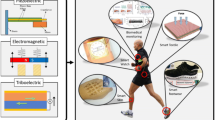Abstract
In the era of Internet of Things, so many wireless networked sensors and smart devices are embedded in infrastructures. For so many different wireless sensors, accurate times tamps are important to interpret data. In general, time stamps can be obtained by atomic clocks and GPS. The paper used the natural timestamping which is based on the grid frequency estimation. For grid frequency estimation, the paper proposed maximum merging model in fractional cepstrum domain for dealing with complicated power grid channel interference in China grids with data measured by the wireless sensor networks. The proposed method outperforms existing power grid frequency measurement algorithms, because the existing do not consider the facts that harmonic is time-varying and the pass band of some recording devices do not cover grid frequency. Through analyzing the results of analog frequency measurement, actual voice frequency measurement and recording audio tampering detection, this method is better than the one Bykhovsky proposed. It can be preferably applied to the grid frequency measurement, recording location recognition and audio tamper detection.



Similar content being viewed by others
References
Grigoras, C.: Application of ENF analysis method in authentication of digital audio and video recordings. In: Proceedings of Audio Engineering Society 123rd Conv., New York, p. 1273 (2007)
Brixen, E.B.: ENF—quantification of the magnetic field. In: Proceedings of Audio Engineering Society 33rd Conf., Audio Forensics—Theory and Practice, Denver, CO, pp. 1–6 (2008)
Chang F.-C., Huang H.-C.: Electrical network frequency as a tool for audio concealment process. In: International Conference on Intelligent Information Hiding and Multimedia Signal Processing, IIHMSP 2010, pp. 175–178 (2010)
Rodríguez, N., Patricio, D.: Audio authenticity: detecting ENF discontinuity with high precision phase analysis. IEEE Trans. Inf. Forensics Secur. 5(3), 534–543 (2010)
Desainte-Catherine, M., Marchand, S.: High-precision Fourier analysis of sounds using signal derivatives. J. Audio Eng. Soc. 48(7/8), 654–667 (2000)
Nicolalde, D.P., Apolinario, J.A.: Evaluating digital audio authenticity with spectral distances and ENF phase change. In: IEEE International Conference on Acoustics, Speech and Signal Processing, 2009. ICASSP 2009, 19–24 April, pp. 1417–1420 (2009)
Chan, F., So, H.C., Lau, W.H.: Efficient approach for sinusoidal frequency estimation of gapped data. Signal Process. Lett. 17(6), 611–614 (2010)
So, H.C., Chan, F.K.W., Sun, W.: Subspace approach for fast and accurate single-tone frequency estimation. IEEE Trans. Signal Process. 59(2), 827–831 (2011)
Jeon, H.-J., Chang, T.-G.: Iterative frequency estimation based on MVDR spectrum. IEEE Trans. Power Deliv. 25(2), 621–630 (2010)
Zhai, M.-Y., Heidi, K., Rector, J.W.: A new fractal interpolation algorithm for seismic data based on the iteration function systems. Europhys. Lett. 92(4), 49001p1-p6 (2010)
Bykhovsky, D., Cohen, A.: Electrical network frequency (ENF) maximum-likelihood estimation via a multitone harmonic model. IEEE Trans. Inf. Forensics Secur. 8(6), 744–753 (2013)
Hajj-Ahmad, A., Grag, R., Wu, M.: Spectrum combining for ENF signal estimation. IEEE Signal Process. Lett. 20(9), 885–888 (2013)
Hajj-Ahmad, A., Garg, R., Wu, M.: ENF based location classification of sensor recordings. In: 2013 IEEE International Workshop on Information Forensics and Security (WIFS), pp. 138–143 (2013)
Zhai, M.-Y.: Mitigation of the moving radio interferences in the OFDM-based power line communication channels in China. Int. J. Commun. Syst. https://doi.org/10.1002/dac.2887. (Article first published online: 21 Oct 2014)
Zhai, M.-Y.: Transmission characteristics of low-voltage distribution networks in china under the smart grids environment. IEEE Trans. Power Deliv. 26(1), 173–180 (2011)
Almeida, L.B.: The fractional Fourier transform and time-frequency representation. IEEE Trans. Signal Process. 42(11), 3084–3093 (1994)
Bao, Y.Q., Zhao, L., Zou, C.R.: Voice fractal feature extraction and analysis in the noisy environments. IEEE 29(3), 585–588 (2007)
Zhai, M.-Y., Su, L.-D.: Research on the memory order of the power-line communication channel. Int. J. Commun. Syst. https://doi.org/10.1002/dac.2744. (Article first published online: 27 Jan 2014)
Author information
Authors and Affiliations
Corresponding author
Rights and permissions
About this article
Cite this article
Mao, QL., Zhai, MY. A new grid frequency estimation algorithm based on the fractional FFT for IoT nodes time stamps. Cluster Comput 22 (Suppl 4), 8155–8160 (2019). https://doi.org/10.1007/s10586-017-1653-2
Received:
Revised:
Accepted:
Published:
Issue Date:
DOI: https://doi.org/10.1007/s10586-017-1653-2




